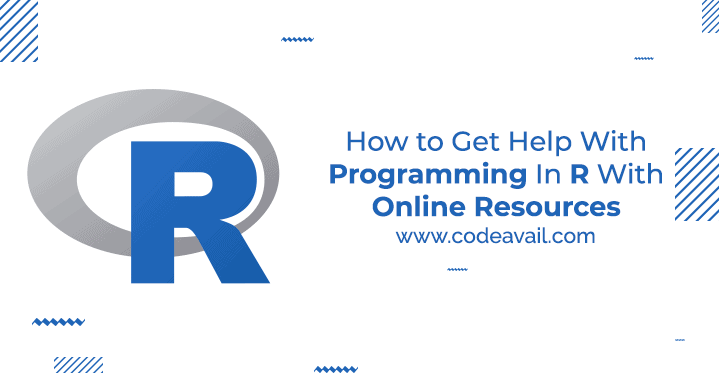As we look forward to 2024, it is time to embark on an exciting journey. One that leads us into the dynamic world of e-learning strategies.
We have put together a comprehensive guide for you to succeed in your educational dreams. A specialist roadmap to optimize your educational experience. From seasoned computer technicians to eager students, we have all the juicy tips and tricks to get you started.
You can level up your e-learning journey with the AI Content Generator, a game-changing tool that enhances educational strategies. You can create engaging content effortlessly for an enriching & learning adventure.
Are you ready to revolutionize your educational journey? Join us today!
1. Unleash the power of play
Table of Contents
Gamification: A Paradigm Shift in Learning
Gamification has become more than a trend because of the incredible mobile app development companies that executes the tasks with ease. It’s the new cool kid on the block and it’s ready to shake up education. Now you can explore game elements to elevate your learning experience in many ways.
Quest-based learning
Why not frame your learning as a series of quests?
Each quest can be viewed as a new adventure. You can take one step at a time in that quest. Leading you through your educational journey at a pace that suits you.
Achievement unlocked
The concept of earning achievements has gained widespread popularity in recent years. You can assign milestones to your coursework and celebrate every accomplishment.
Competition as motivation
You could try to use friendly competition to motivate yourself. This is a common tactic amongst gamers and could make your learning more fun. We recommend you make use of leaderboards to showcase your progress. This in turn will create a sense of accomplishment for your achievements.
Elements of gamification
Points system
To motivate yourself further we suggest you assign points to different tasks. Once the tasks are complete you can reward yourself points. Naturally, using a system that works for you, You should aim to earn the maximum points for a well-rounded learning experience.
Badge collection
Set badge collection goals. Collect badges as tangible reminders of your achievements.
Leaderboard climbing
Treat the leaderboard as a friendly challenge. You should strive to climb steadily. This will showcase your continuous improvement.
Create personal quests:
You can tailor these quests to your learning objectives. Personalize your challenges to align with your educational goals.
Here are some tips to unlock the motivational potential of gamification:
Visualize your progress:
Create a visual representation of your progress. Track achievements, points, and badges to see how far you’ve come. Many people use vision boards to help them accomplish this goal.
Set milestones
Break down your learning journey into milestones. Celebrate each milestone to maintain motivation.
Reward yourself
Attach rewards to your achievements. Treat yourself when you reach significant milestones, creating a positive reinforcement loop.
2. Elevate learning accessibility with transcription
Breaking barriers in education involves using the marvels of transcription technology. This creates a more inclusive and accessible learning environment.
E-learning transcription magic
Unlock the potential of e-learning transcription to transform how information is consumed.
Accessibility for all
E-learning transcription ensures that educational content is accessible to a diverse audience. Which includes those with auditory challenges. It breaks down barriers and provides an inclusive learning experience for every single student.
Enhanced comprehension
Transcribing educational material enhances comprehension. Students can read, review, and reinforce their understanding, fostering a deeper connection with the subject matter.
Multimodal learning
You should consider multimodal learning. This works by combining audio and visual elements with transcriptions. This approach accommodates various learning styles. It caters to the preferences of individual students.
Transcription technology transformation
Universal design
Using the latest speech-to-text technology, E-learning transcription aligns with universal design principles. This ensures that educational resources are designed to meet the needs of all learners. Which is regardless of their abilities or disabilities.
Flexibility in learning
Transcriptions provide flexibility in learning by allowing students to engage with the material at their own pace. Whether reviewing lectures or preparing for exams. Learners have the freedom to navigate content conveniently.
Language support
These speech-to-text transcriptions offer support for language learners. Students can follow along with spoken content while simultaneously reading the transcription, reinforcing language skills and comprehension.
3. Virtual reality’s immersive revolution
Virtual Reality (VR) has revolutionized e-learning, notably through virtual presentations. By integrating VR into education, learners experience immersive environments, enhancing engagement and knowledge retention.
The promise of immersion
Adding virtual reality to e-learning gives students a cool and immersive experience. With VR, they can dive into lifelike situations. As well as being able to interact with their surroundings in ways regular methods just can’t match.
This heightened level of engagement has the potential to significantly improve comprehension. As well as assisting you to retain complex concepts.
Statistics
Studies are now showing that VR has become a very useful tool in e-learning. You should consider the compelling statistics that highlight this positive impact. Research indicates a noticeable increase in knowledge retention rates when educational content is delivered through VR experiences.
The immersive nature of VR facilitates a deeper understanding of subjects. Due to learners actively participating in the learning process. Instead of passively attempting to absorb information.
Overcoming challenges
The potential benefits of VR and education are vast. However, the integration of VR into e-learning is not without its challenges.
Some common hurdles institutions must face include:
- technical barriers
- cost implications
- the need for specialized training for educators
Overcoming these challenges could pave the way for a more inclusive and effective educational environment.
Implementation strategies
Successfully integrating VR into e-learning requires thoughtful planning and strategic implementation.
Educators and institutions must explore effective strategies to seamlessly incorporate VR technology into existing curricula. This involves:
- identifying suitable VR applications
- developing content that aligns with educational objectives
- ensuring accessibility for all learners.
4. Swift customer service assistance
As the educational industry evolves the need for swift and effective customer service is essential. Indeed it is an integral part of enhancing the overall learning experience. Particularly when troubleshooting an e-learning software or platform
Strategies for swift assistance
Boosting the learning experience with prompt customer service requires smart and effective strategies. Educational institutions must prioritize:
- the establishment of clear communication channels
- streamlined query resolution processes
- the adoption of cutting-edge technologies.
These strategies will directly contribute to the overall customer satisfaction experience. Additionally, they will also play a crucial role in encouraging a positive and supportive learning environment.
The magic of data science
If you want to optimize your customer service you must ensure all components of this department are working like a well oiled machine.
This is where data science enters and takes center stage!
We recommend you employ data analytics within your educational institution. Like with most modern businesses, you can gain valuable insights into students. These include:
- behaviors
- preferences
- pain points.
The integration of data science enables personalized assistance. This will make the support process more efficient and tailored to individual needs.
Challenges in customer service
For any good customer service department the main goal is to provide swift assistance. However educational institutions often encounter challenges in the delivery of efficient customer service.
These challenges may include:
- resource constraints
- communication gaps
- the need for continuous staff training.
Addressing these obstacles is essential to maintaining a responsive support system. Especially if it is to meet the diverse needs of various learners.
Technological innovations
Technology has become a vital component in every business. The same applies to customer service departments.
You should consider experimenting with these options:
- artificial intelligence
- chatbots
- other automated systems
They can significantly enhance response times and provide learners with instant support. The integration of these advanced technologies will improve assistance exponentially. Additionally, it showcases a commitment to staying at the forefront of advancements in educational support services.
5. Learn on the go
The demand for flexibility has led to radical shifts in learning approaches. This is particularly true with e-learning.
Advantages of mobile learning
Mobile-friendly education platforms offer a myriad of advantages. Many cater to the needs of modern learners. One key benefit is accessibility, as users can engage with educational content anytime, anywhere.
This flexibility will allow you to continue your regular lifestyle. As well as helping many freelance and remote students to work in their own time.
This style of education will enable you to integrate learning into their busy schedules. Additionally, the interactive nature of mobile platforms enhances engagement and encourages active participation in the learning process.
Tailoring content for mobile accessibility
To fully embrace the flexibility offered by mobile-friendly education platforms, it is crucial to tailor content for optimal accessibility. This involves optimizing materials for:
- smaller screens
- ensuring responsive design
- using multimedia elements that enhance the learning experience on mobile devices.
Mastering e-learning
Beyond the technical facets of e-learning lie the keys to unlocking a personalized and engaging learning experience.
Your education is no longer confined to a static space! Instead, you can adapt to the rhythm of your life and learn at your own pace.
Let the digital canvas of education be your muse, and may your learning endeavors be ever-evolving masterpieces.


